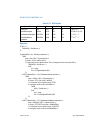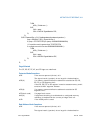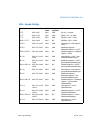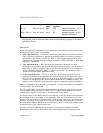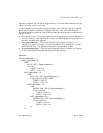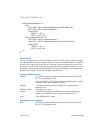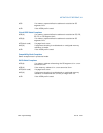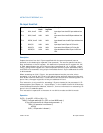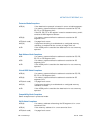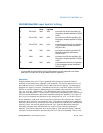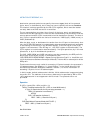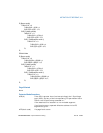
3-462 Vol. 2A IN—Input from Port
INSTRUCTION SET REFERENCE, A-M
IN—Input from Port
Description
Copies the value from the I/O port specified with the second operand (source
operand) to the destination operand (first operand). The source operand can be a
byte-immediate or the DX register; the destination operand can be register AL, AX,
or EAX, depending on the size of the port being accessed (8, 16, or 32 bits, respec-
tively). Using the DX register as a source operand allows I/O port addresses from 0
to 65,535 to be accessed; using a byte immediate allows I/O port addresses 0 to 255
to be accessed.
When accessing an 8-bit I/O port, the opcode determines the port size; when
accessing a 16- and 32-bit I/O port, the operand-size attribute determines the port
size. At the machine code level, I/O instructions are shorter when accessing 8-bit I/O
ports. Here, the upper eight bits of the port address will be 0.
This instruction is only useful for accessing I/O ports located in the processor’s I/O
address space. See Chapter 13, “Input/Output,” in the Intel® 64 and IA-32 Architec-
tures Software Developer’s Manual, Volume 1, for more information on accessing I/O
ports in the I/O address space.
This instruction’s operation is the same in non-64-bit modes and 64-bit mode.
Operation
IF ((PE = 1) and ((CPL > IOPL) or (VM = 1)))
THEN (* Protected mode with CPL > IOPL or virtual-8086 mode *)
IF (Any I/O Permission Bit for I/O port being accessed
= 1)
THEN (* I/O operation is not allowed *)
#GP(0);
ELSE ( * I/O operation is allowed *)
Opcode Instruction 64-Bit
Mode
Compat/
Leg Mode
Description
E4 ib IN AL, imm8 Valid Valid Input byte from imm8 I/O port address into
AL.
E5 ib IN AX, imm8 Valid Valid Input word from imm8 I/O port address into
AX.
E5 ib IN EAX, imm8 Valid Valid Input dword from imm8 I/O port address into
EAX.
EC IN AL,DX Valid Valid Input byte from I/O port in DX into AL.
ED IN AX,DX Valid Valid Input word from I/O port in DX into AX.
ED IN EAX,DX Valid Valid Input doubleword from I/O port in DX into
EAX.



